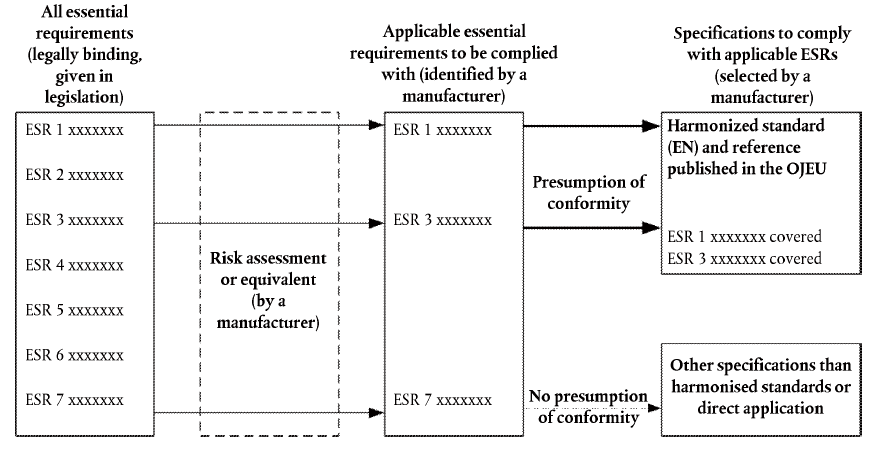For manufacturers who are starting to implement the new hazard based IEC 62368-1 standard for their products, they may soon become aware that IEC/EN 62368-3 (an offshoot standard) is emerging as an additional hurdle in this transition process. To clarify, it should be understood that IEC 62368-3 is a separate standard from the base standard, not to be confused with IEC 62368-1, 3rd ed. The title of this adjunct standard is: “Safety Aspects for DC Power Transfer Through Communication Cables and Ports”. This new standard applies to most information technology equipment and is proving to be a challenge to implement.
IEC 62368-3 address two types of circuits: remote feeding telecommunication (RFT) circuits (Clause 6), and low voltage DC power circuits (Clause 5). For the purposes of this discussion, we will only focus on clause 5, and only for equipment transferring power through common I/O ports (USB, HDMI, etc) to ancillary devices.
Problems Complying with the Standard:
The product types under consideration here incorporate a power supply that provides low voltage DC power to a motherboard or other communication board, which then transfers the DC power out of I/O ports to ancillary devices. The crux of the IEC/EN 62368-3 standard is that it requires a very low voltage limit on the DC power supplied to I/O ports during single-fault conditions. In the case of the architecture in question, a single fault in either the power supply or motherboard can affect the output voltage at I/O ports. Since power supplies and motherboards currently on the market have not been evaluated to these stringent limits, implementation of this new standard is forcing the end-system manufacturer to conduct testing/evaluation of these components. For an end-system manufacturer to procure the necessary information from his/her component vendors can be very challenging and can beg the question: Do I really need to comply with this?
Do I Really Need to Comply?
To answer this question, let’s look at requirements for three main certification schemes:
- US/CAN NRTL requirements
- CB Scheme requirements
- CE Mark requirements
US/CAN
We will start with the easiest US/CAN requirement. In the US/CAN version of the base standard UL/CSA 62368-1, clause 5 is voluntary – so no, you don’t need to comply. Now for the hard stuff.
CB Scheme
For compliance with CB Scheme, the current enforcement of IEC/EN 62368-3 really seems to depend on your certification body. Some certification bodies are requiring clause 5 to comply with the 3rd edition of the base standard, but not the 2nd ed. Others are requiring it for the 2nd and 3rd editions unless it is a legacy product transitioning from an old CB. Still others seem to not require it at all. If you are looking to determine a good fit, we may be able to assist in the decision-making process. If you don’t require CB certification and only need to comply with the Low Voltage Directive (LVD) requirements for Europe you have a little more flexibility, see below.
European CE Mark
For compliance with the LVD requirements for CE marking, the path most utilized is the harmonized standard method of conformity. The basic idea is: if a product complies with applicable standards found in the Official Journal of the EU, that will suffice as evidence that the LVD requirements covered by that standard have been met. Since the European version of IEC 62368-3 is not currently found in the Official Journal of the EU, compliance with it does not automatically give evidence of conformity. If complying with the requirements of this standard does not prove conformity, could not complying with the requirements be considered a faux pas?
To determine the answer to this question, we will look to the EU’s Blue Guide for help. The Blue Guide was developed as a tool to assist in implementing requirements of New Approach Directives, such as the LVD. In the Blue Guide it states: “a manufacturer always, even when using harmonised standards, remains fully responsible for assessing all the risks of his product”. It goes on to say that if no harmonized standard exists which adequately address risks found during assessment, then other means must be used to address it. See below for illustration of this method from 2016 version of the Blue Guide:

To give some guidance on the terms used in this illustration, ESR is an Essential Safety Requirement from the directive in question. In the case of the Low Voltage Directive, these requirements are not very specific, e.g. equipment shall not impart harm or injury to persons or farm animals. In practice, the process illustrated above is typically conducted in reverse. A product is evaluated to a harmonized standard, which most manufacturers assume indicates that all relevant risks have been adequately addressed. IEC/EN 62368-3, clause 5 addresses a specific risk, but since it is not a harmonized standard, does not give presumption of conformity. Since compliance with this new standard can be an invasive undertaking, we would suggest following the process illustrated above from left to right and assess the risk in question. Assessing the risk and potential hazards can shed some light on the degree of risk reduction warranted. Additionally, the assessment and measures taken can differ on a product by product basis.
How can we Help:
G&M can aid in evaluating risks, the necessity for IEC/EN 62368-3, as well as conduct evaluations to Clause 5 requirements if needed. For additional information, please contact G&M Compliance, Inc. at 714-628-1020




Comments are closed.